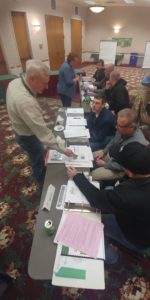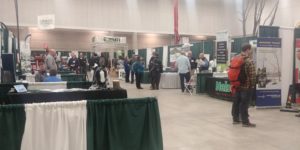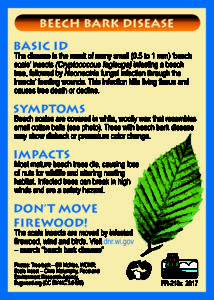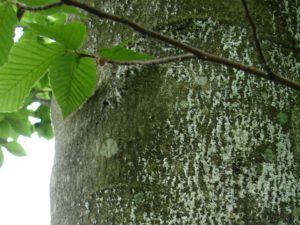“When we see land as a community to which we belong, we may begin to use it with love and respect.” Aldo Leopold spoke these words many years ago, but they still ring true today. We all belong to a community, built around the people and the places we love and feel connected to, including trees and the land. Trees help shape communities and create sentimental landmarks that connect people and places. Consider the large elm that may hold a family tire swing, or the oak that made the perfect place for a secret club house, perhaps it’s under a crabapple tree that a couple shared their first kiss, trees becomes fixtures in our lives, bookmarks for the moments we relish.
Urban Forestry News
Canopy cover assessed for all Wisconsin municipalities and urban areas
By Dan Buckler, Urban Forest Assessment Specialist, DNR
Whether you see urban trees as art, infrastructure or the lungs of your community, they are important assets in our state. And recently released tree canopy data from the DNR’s Urban Forestry program shows exactly where those trees and other woody vegetation exist in the state’s municipalities and urban areas. Continue reading “Canopy cover assessed for all Wisconsin municipalities and urban areas”
Community grant to utilize their ash
The Madison Community Foundation announced in February a $75,000 grant intended to help local community organizations utilize wood from ash trees that were felled due to emerald ash borer for education and artistic projects. Continue reading “Community grant to utilize their ash”
A Glimpse into New Berlin’s Tree Canopy
By Dan Buckler, Urban Forestry Assessment Specialist, DNR
The Urban Forestry program’s recently released Urban Tree Canopy data shows the extent of tree and shrub cover across every Wisconsin municipality and urban area. The City of New Berlin in southeast Wisconsin offers a glimpse into the kind of information you could derive from the canopy data. Continue reading “A Glimpse into New Berlin’s Tree Canopy”
Community Tree Management Institute: Building on a solid foundation
By Olivia Witthun, Urban Forestry Coordinator
 The second of three sessions for Wisconsin’s Community Tree Management Institute (CTMI) was held February 6-7, 2018 in Green Lake. Through hands-on training and exercises, twenty-six students from across the state learned how to identify community forestry management needs and get the work done. Topics included: inventories, management plans, urban and community forestry operations (planting, pruning and removal), natural areas, tree biology, hardscape conflicts, soils, risk tree management and tree emergencies. Instructors for session II included: municipal forestry staff, university staff, consultants and DNR staff. The variety of instructors, their perspectives and interactive components are meant to appeal to all learning styles. Continue reading “Community Tree Management Institute: Building on a solid foundation”
The second of three sessions for Wisconsin’s Community Tree Management Institute (CTMI) was held February 6-7, 2018 in Green Lake. Through hands-on training and exercises, twenty-six students from across the state learned how to identify community forestry management needs and get the work done. Topics included: inventories, management plans, urban and community forestry operations (planting, pruning and removal), natural areas, tree biology, hardscape conflicts, soils, risk tree management and tree emergencies. Instructors for session II included: municipal forestry staff, university staff, consultants and DNR staff. The variety of instructors, their perspectives and interactive components are meant to appeal to all learning styles. Continue reading “Community Tree Management Institute: Building on a solid foundation”
City tree champions lauded for outstanding community service
The Wisconsin Urban Forestry Council recently announced award recipients honoring those dedicated to protecting, preserving and increasing the number of trees that line city streets, fill community parks and beautify neighborhoods throughout the state. Continue reading “City tree champions lauded for outstanding community service”
2018 WAA/DNR Conference was an immense success
 The 2018 WAA/DNR Annual Conference was held February 18-20 in Green Bay, Wisconsin. This year there was a record attendance of 857 people. Those in attendance were from the private industry, business owners, municipal staff, and state employees. Again, this year there were several different tracks attendants could attend: general sessions, climbers corner, introductory, business and utility. Across these tracks many topics were covered, from insects and pests to climbing and building an arboriculture business. This three-day conference also hosted many different exhibitors from the industry to provide attendees with up-to-date technology, equipment and practices to improve their work. Continue reading “2018 WAA/DNR Conference was an immense success”
The 2018 WAA/DNR Annual Conference was held February 18-20 in Green Bay, Wisconsin. This year there was a record attendance of 857 people. Those in attendance were from the private industry, business owners, municipal staff, and state employees. Again, this year there were several different tracks attendants could attend: general sessions, climbers corner, introductory, business and utility. Across these tracks many topics were covered, from insects and pests to climbing and building an arboriculture business. This three-day conference also hosted many different exhibitors from the industry to provide attendees with up-to-date technology, equipment and practices to improve their work. Continue reading “2018 WAA/DNR Conference was an immense success”
New Wisconsin Wildcard available on beech bark disease
Written by: Linda Williams, forest health specialist, Woodruff. Linda.Williams@wisconsin.gov, 920-360-0665.
A new Wisconsin Wildcard is available on beech bark disease (BBD). Wisconsin Wildcards are pocket-sized, collectible informational pieces available at Wisconsin state parks. The BBD wildcard may be viewed here. If you’d like to order them, send a request to Forestry.Webmail@wisconsin.gov (ask for publication no. FR-218x).
Beech bark disease will eventually become a problem wherever beech is found. The native range of American beech (Fagus grandifolia) extends into the eastern third of Wisconsin. BBD is the result of a relationship between exotic scale insects and a Neonectria fungus. The disease was first identified in Wisconsin in 2009. Currently, the only known area of the state which has experienced mortality from BBD is Door County.

Front and back of the new beech bark disease Wisconsin Wildcard.

The scale insects feed by inserting their mouthparts through the bark on the trunk and branches and sucking the sap from the tree. The fungus, which “hitchhikes” on the scale insects’ bodies, enters the tree through those wounds. The tiny scale insects secrete a white waxy protective covering; when scale populations explode and there are millions of scales on a tree, the tree can appear white from a distance, making it resemble a birch tree. As the fungus enters the tree at numerous points and dead spots under the bark (called cankers) form, the tree becomes weakened, leading to a risk of “beech snap.” Beech snap can occur unexpectedly when the tree still has a full canopy of leaves remaining. Beech snap can create huge problems for park and campground managers who are trying to keep guests safe; there is no way to predict when a tree is going to fail from BBD.

Hundreds of tiny scale insects (covered in white fluff) are present on this small area of beech bark. Photo: Linda Williams
Eventually, the insects and disease take their toll and the beech trees decline and die. Any age of beech tree can be infested, so in stands with significant beech mortality, regenerating trees will become infested as well as mature ones. The good news is that three to five percent of American beech trees are resistant to BBD. Michigan has identified and propagated such trees for a number of years, and have established a seed orchard of resistant trees. BBD is not yet as established in Wisconsin, but already we’ve been able to identify a couple of resistant trees in the area where BBD has killed many trees.
For more info on beech bark disease, visit Wisconsin DNR’s webpage on BBD.
National Invasive Species Awareness Week
Written by: Linda Williams, forest health specialist, Woodruff. Linda.Williams@wisconsin.gov, 715-356-5211 x232
National Invasive Species Awareness Week (NISAW) was held from February 26 to March 2 this year. The annual event helps raise awareness and identify solutions to invasive species issues at local, state, tribal, regional, international and national scales. The event not only addresses insects and diseases, but all invasive species, including plants, reptiles, birds, and everything else. Visit the National Invasive Species website for things that you can do increase your awareness of invasive species, or click here to learn about ways you can help.

Building a Community Ecology Project
Contents of this article are shared for informational purposes only. The Wisconsin Department of Natural Resources does not endorse and makes no representations, expressed, inferred or implied, concerning these organizations, programs or services.
By Paul Fliss, City Forester, City of New Berlin, WI
The City of New Berlin applied for a National Fish and Wildlife Federation (NFWF) Five Star and Urban Waters Restoration Grant in 2017. The proposed project will cover 9.59 acres and encompass the length of Deer Creek and the wetlands to the south and east of the City Center Business District. Common to this area are several species of resident birds, migratory songbirds, owls and waterfowl. Recent history has revealed an abundance of whitetail deer and smaller animals such as muskrats, raccoon, opossum, skunks, various mice/voles and even evidence of a beaver. The habitat for these species is that of an urban to rural interface and wetland transition ecology. The current state of the defined proposal areas vary between ‘poor’ with construction debris, litter and heavily infested invasive species to ‘fair’ with few invasive species and nearly undisturbed lowland habitat, native trees and wetlands plants. Continue reading “Building a Community Ecology Project”
